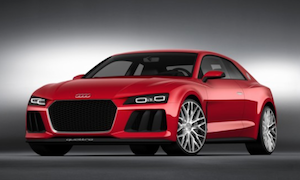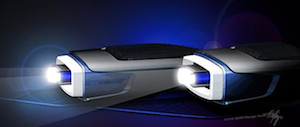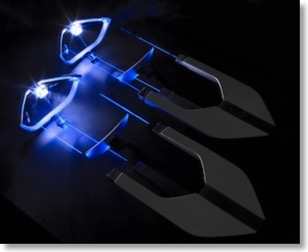Home
A comprehensive resource for safe and responsible laser use
UK: New UK law provides stronger penalties, easier prosecution for aiming a laser at a vehicle
The penalties for violations are up to five years imprisonment and an unlimited fine; these penalties take effect starting July 10 2018.
The law applies to laser beams aimed at aircraft, motor vehicles, trains, ships, hovercraft and other vehicles. A vehicle does not have to be moving at the time of offense; if the engine or motor is running then the law applies. Another provision makes it an offense to shine or direct a laser beam towards an air traffic facility, or a person providing air traffic services, under the condition where the beam dazzles or distracts, or is likely to dazzle or distract a person providing air traffic services.
The offense is a strict liability offense, meaning that prosecutors do not need to prove that the person shining the laser intended to endanger the vehicle or air traffic facility/controller. There are two defenses allowed: 1) the person had a reasonable excuse for shining the laser beam, or 2) the person did not intend to shine a laser at the vehicle/ATF/controller and exercised all due diligence to avoid doing so.
Click to read more...
UK: New UK law to provide stronger penalties, easier prosecution for aiming a laser at a vehicle
The text of the bill is here. A House of Lords Summary Briefing, giving some background, is here.
Tough new penalties for misuse of lasers
People who target transport operators with laser devices could be jailed for up to 5 years under new laws designed to protect the public.
The Laser Misuse (Vehicles) Bill, which was published today (20 December 2017), will also expand the list of vehicles, beyond just planes, which it is an offence to target with lasers.
Drivers of trains and buses, captains of boats and even pilots of hovercraft will be among those protected by the new legislation.
The bill will make it easier to prosecute offenders by removing the need to prove an intention to endanger a vehicle.
And it will remove the cap on the amount offenders can be fined – which is currently limited to £2,500 – paving the way for substantial sanctions. Fines could be issued in isolation or alongside a prison sentence.
The police will also be given additional powers to catch those responsible for the misuse of lasers.
Aviation Minister, Baroness Sugg said:
“Lasers can dazzle, distract or blind those in control of a vehicle, with serious and potentially even fatal consequences.”
“The government is determined to protect pilots, captains, drivers and their passengers and take action against those who threaten their safety.”
Alongside their existing powers of arrest and the ability to search a person once arrested, officers will no longer need to establish proof of intention endanger to a vehicle, aircraft or vessel, making it easier to prosecute swiftly. It will be an offence to shine or direct a laser towards a vehicle if it dazzles or distracts the operator, if done deliberately or if reasonable precautions to avoid doing so are not taken.Click to read more...
UK: New law proposes prison for aiming laser pens at aircraft, trains, cars, other vehicles
It is more stringent than the current law which 1) only applies to aiming at aircraft, 2) requires prosecutors to prove that the perpetrator endangered the aircraft and 3) has a fine of up to £2,500 (USD $3,112).
The new law will 1) apply to a wider variety of transport modes including automobiles, 2) require prosecutors only to prove that the laser was directed towards the transport vehicle and 3) will also add the prospect of prison time to the potential punishment. The exact new fines and prison terms were not stated in the DfT announcement.
Click to read more...
US: Self-driving cars can be disrupted using a laser pointer
LIDAR sensors on self-driving cars work by sending laser light — usually non-visible infrared beams — in order to detect objects’ shapes and distances. According to Jonathan Petit, there is a problem: “Anybody can go online and get access to this, buy it really quickly, and just assemble it, and there you go, you have a device that can spoof lidar.”
The LIDAR can be made to falsely perceive objects that do not exist, or to ignore objects that are actually present.
A simple attack would cause the self-driving car to run into another car or an object. A more sophisticated attack could cause the car to choose a different path. Petit says “[this] means that then the risk could be ‘I’m sending you to small street to stop you and rob you or steal the car.’”
The Business Insider article is unclear but it appears the $43 is for equipment in addition to the cost of the laser pointer. Also, although the article did not say, it may be that the laser pointer needs to emit infrared light instead of, or in addition to, visible light.
Petit is a post-doctoral researcher at the University of California, Berkeley.
From an article in Business Insider, posted December 15 2016. The detailed article also discusses many other non-laser techniques of hacking self-driving cars.
US: No laser beam headlights for U.S. cars -- not without rule changes
Toyota has filed a petition with the National Highway Traffic Safety Administration, seeking to allow the advanced headlights.
A story in Ars Technica goes into more detail about how the laser headlights work, and how companies are advocating for “sensible policy solutions where the tech and car worlds intersect.”
From a June 5 2014 Ars Technica article by Jonathan M. Gitlin
Note from LaserPointerSafety.com: Although automobile headlights are not laser pointers, they do use diodes similar or identical to those in high-powered blue lasers such as the multi-watt Wicked Lasers S3 Arctic handheld. In headlights, laser diodes are used to energize a phosphor coating so that incoherent bright white light is emitted. The small diodes allow the headlight assembly to be lower-profile, giving more flexibility in body design and aerodynamics. They also allow beam shaping to avoiding dazzling other drivers, and aiming the beam in the direction of travel while turning. Our coverage of laser headlights (other stories) can be found here.
Worldwide: Audi introduces laser headlights; follows BMW's lead

Audi Sport Quattro concept car
BMW also has introduced laser headlights, on its electric supercar i8.
The headlights use laser diodes to energize a phosphor that creates white light. According to Audi, the beams have a range of 1640 feet, twice the distance of LED high beams.
Technically, the white-light beam would not have the same coherence as a laser, making it safer for human vision (at least, at normal driving distances -- any very bright light viewed up close could be an eye hazard). An Audi spokesperson said “Our main aim was to not dazzle any drivers, laser technology is much more accurate.”
Because the laser diodes are so tiny -- only a few micrometers in diameter -- the headlight assembly itself can be made smaller as well.

Closeup of the Audi laser headlights
The laser power appears to be about 10 watts, based on an Australian report that “the system is 10,000 times more powerful than a laser pointer”. Such pointers in Australia are limited to 1 milliwatt or 1/1000 watt. It is unclear if this refers to the total power of both headlights, or of a single headlight.
From Car and Driver, and News.com.au. MotorTrend has an excellent article from 2011 describing in detail how the BMW laser headlights work. It contains an account where journalists looked directly into the light without adverse effect.
Germany: BMW shows safety features of its new laser headlights
Each of the four headlights uses three blue lasers. The lasers are directed by mirrors onto a lens containing yellow phosphorus. This re-emits white light onto a larger mirror that reflects it out the headlight glass onto the road.

Two of the four laser headlights are shown here. The resulting white light beam is emitted toward the upper left of the photo.
The system is 1000 times brighter than LED headlights, uses half the power, lasts just as long (10,000 hours) and allows more flexible designs. BMW noted that light emitted from the headlights is not laser light, and is safe to stare into. In case of an accident, the headlights are powered down so no laser light could escape.
[Note from LaserPointerSafety.com: It is likely that the laser diodes in the headlight are the same type used in Casio’s Green Slim projectors and the Wicked Laser Spyder III Arctic handheld laser. These are relatively inexpensive -- less than $30 each in quantity -- and produce a nominal 1 watt of light.]
From Motor Trend
US: UPDATED - Myrtle Beach CAP official witholds safety flights after being charged for confiscating laser pointer from 12-year-old (+ 2 updates)

Stephen Teachout
In retaliation, Teachout said the three-pilot Civil Air Patrol would not provide help to Horry County (where Mytle Beach is located) for certain calls including offshore missing persons and forest fires. According to the Sun News, Teachout said “I support Horry County but if they don’t have [the pilots’] backs then no thanks. We don’t need to be here.”
Click to read more...UK: 270% rise in Surrey-area laser pen incidents
A spokesperson pledged to “deal robustly with any incident involving laser light whether it is an assault on another member of the public or a device being pointed at a vehicle. Laser pen owners should also be aware that Surrey Police’s collision investigation unit can pursue a manslaughter charge if it is found that a fatal or life changing injury collision is due to the use of a laser light. All offences have a power of arrest and could result in a term of imprisonment.”
Police are especially concerned about aircraft illuminations in East Surrey, near Gatwick Airport.
From Elmbridge Today, BBC News, and Redhill and Reigate Life. A list of laser pen offences, compiled by the Surrey police, is here.